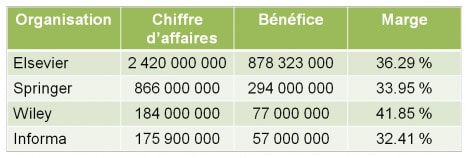Many have written about who is making money in healthcare. Sure doctors do very well, but not as well as hospitals, hospital administrators, insurance companies and their corporate officers, drug companies, device manufacturers, and others.
Another lucrative area is medical journal publication, especially if you are the publisher. A researcher gets an idea, plans and carries out a study, writes a manuscript, and submits it to a journal. The research may have been funded by the government, ie, you and me.
An associate editor or a member of the journal’s editorial board looks at the manuscript, and if it is deemed worthy, it is sent out to two or more people in the same field for peer review. This process may be repeated for papers that require revision.
All of the players in the above scenario—the researchers, most of the editorial board members except maybe the editor, and the peer reviewers—are paid nothing for their work. Factor in that the cost of producing a journal has plummeted in the computer era.
How much money do journal publishers make? Here are some impressive numbers from an article that appeared on a French website called “Rue89.” The figures are for the year 2011 and are in euros. They include revenue from all science publishing, not just medicine.
As you can see profit margins range from 32% to nearly 42%. Elsevier’s profit of over €878 million converts to just over $1 billion.
To put that into perspective, the most recent figures for Apple Inc., arguably the most successful company in the world currently, show a profit margin of 20%.
The Rue89 piece was written as an exposé about the French government’s having to pay Elsevier $172 million in subscription fees to access information generated by scientists who were funded by that same government.
But the French have nothing on us.
In his presidential address to the American Surgical Association, Dr. Layton F. Rikkers, editor emeritus of the Annals of Surgery said:
Nearly $10 billion is spent annually by [US] universities and governmental agencies for access to research findings that their scientists and clinicians give to publishers for free, that their faculty peer review for the alleged honor of doing so, and that are funded by taxpayer dollars and charitable trusts. It is unclear why library budgets continue to increase above the rate of inflation when nearly all the journals they now receive are delivered electronically in large packages from the few remaining consolidated publishing houses. Examples are Wolters Kluwer’s Ovid and Elsevier’s Science Direct each of which contain hundreds of journal titles. Some individual journals not available within these large collections, such as Brain Research, can cost libraries more than $20,000 annually.
There are more than 9000 open access journals, and 3.5 new ones per day are setting up shop. Instead of charging for subscriptions, open access journals are free to the reader, but the authors must pay “processing costs.” Many of these publications have exorbitant fees with little or no true peer review.
Before submitting any paper to an open access journal, authors should be sure they understand the fee structure and check Beall’s list of predatory publishers, which has recently been updated and expanded.
Dr. Rikkers feels, as I do, that print journals will gradually disappear. Post-publication peer review is already gaining momentum through blogs and sites such as PubMed Commons and PubPeer. Even major journals like the BMJ have established rapid response systems for immediate feedback to authors.
The heady days of 40% profit margins may soon be over, but for now big bucks are being made.
Skeptical Scalpel is a retired surgeon and was a surgical department chairman and residency program director for many years. He is board-certified in general surgery and critical care and has re-certified in both several times. He blogs at SkepticalScalpel.blogspot.com and tweets as @SkepticScalpel.



 SkepticalScalpel
SkepticalScalpel